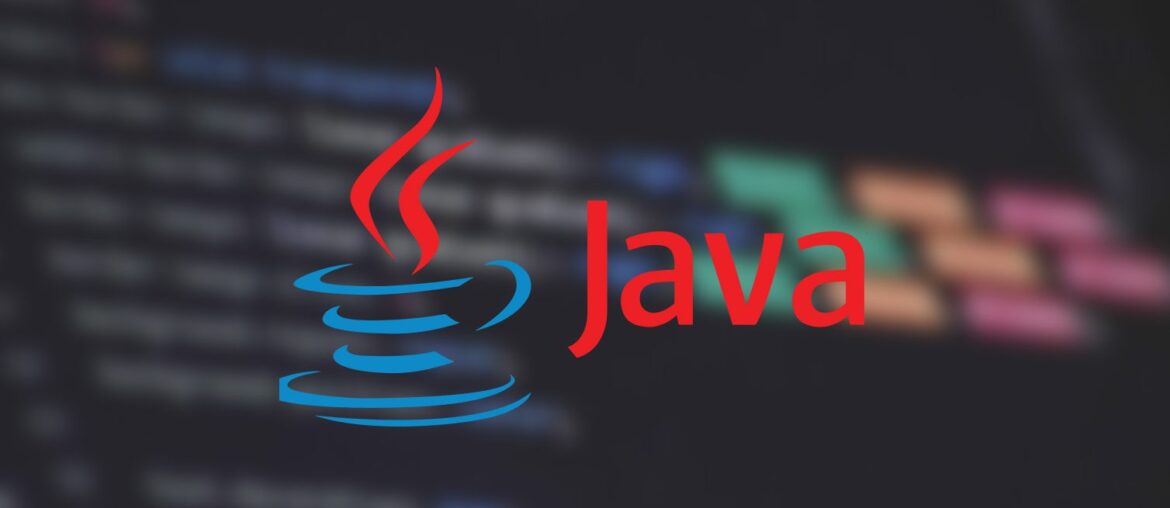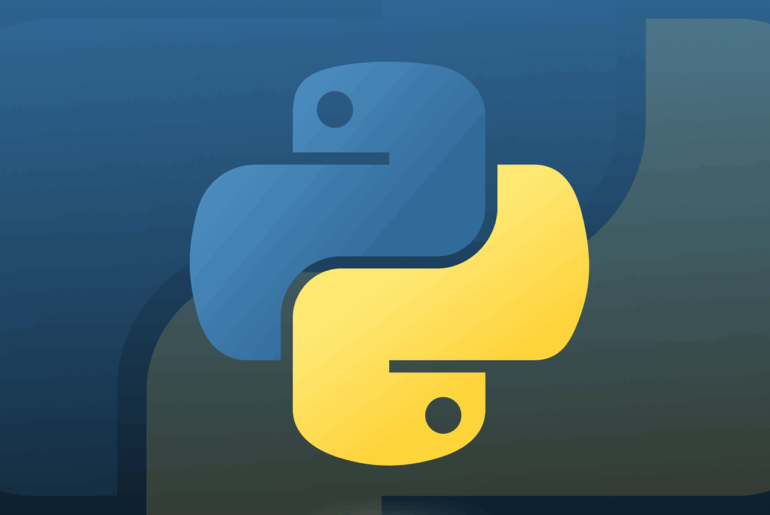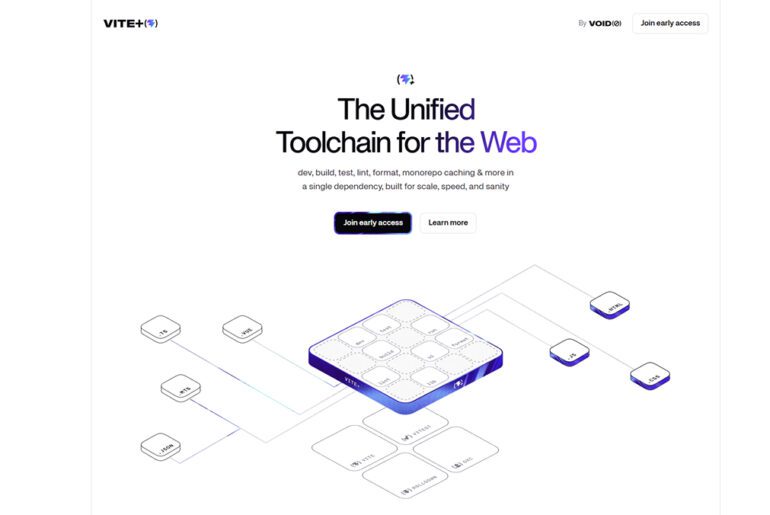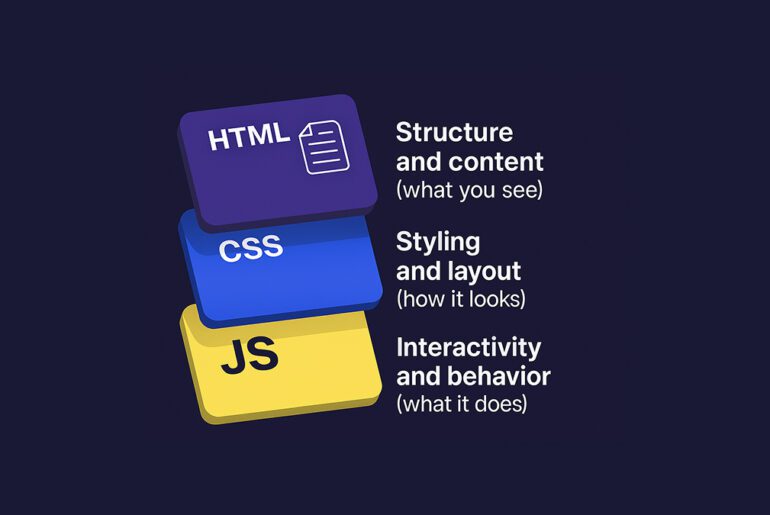Java frameworks have always shaped how we build applications — from early days of JSP/Servlets and Struts, through the rise of Spring, to more modern microservice-oriented stacks. Over the decades, frameworks have evolved to solve recurring challenges: boilerplate, configuration, dependency management, concurrency, cloud deployment, and developer productivity.
In recent years (2024–2025), several trends have pushed the evolution further: Java 21 as the new LTS, GraalVM native image adoption, cloud-native microservices, reactive and event-driven programming, and the drive toward minimal overhead and fast startup.
You, as a developer (or technical decision maker), are part of this ongoing story. The frameworks you choose now will shape how maintainable, scalable, and responsive your applications become. In this guide, I’ll walk you through the most popular and rising Java frameworks in 2025, explain why they matter, and help you see which might fit your use case.
Before diving in, let’s clarify what “popular” means in 2025. It’s not just number of GitHub stars or blog posts. I weigh these factors:
- Active community / usage in real projects
- Ecosystem / integrations (databases, cloud, tooling)
- Performance relevance in 2025 (startup, memory, concurrency)
- Growth / momentum (rising rather than fading)
Also, note that frameworks are not all the same kind: some are full-stack, some are backend / microservice oriented, some are UI centric. I’ll group by role when helpful.
These are frameworks or platforms that continue to anchor much of Java development in 2025.
Spring / Spring Boot / Spring Ecosystem
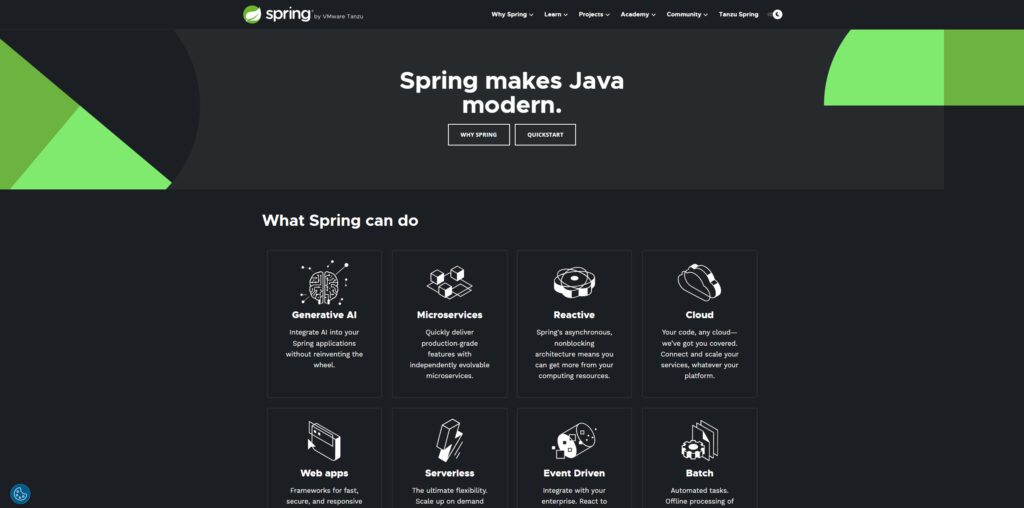
Spring remains the de facto standard. In surveys and analyses of “most popular Java web frameworks in 2025,” Spring Boot consistently tops the list.
Why it still leads:
- It abstracts configuration complexity while giving control when needed
- Rich ecosystem: Spring Data, Spring Security, Spring Cloud
- Strong support for modern architectures like microservices and serverless
A minimal example to spin up a REST endpoint:
@SpringBootApplication
public class Application {
public static void main(String[] args) {
SpringApplication.run(Application.class, args);
}
@RestController
class HelloController {
@GetMapping("/hello")
public String hello() {
return "Hello, world!";
}
}
}Spring’s maturity is also a strength: migration paths exist, lots of tutorials, and integrations. But sometimes it may feel heavy, and you may want something leaner in microservice or cloud-native contexts.
Jakarta EE / Java EE lineage
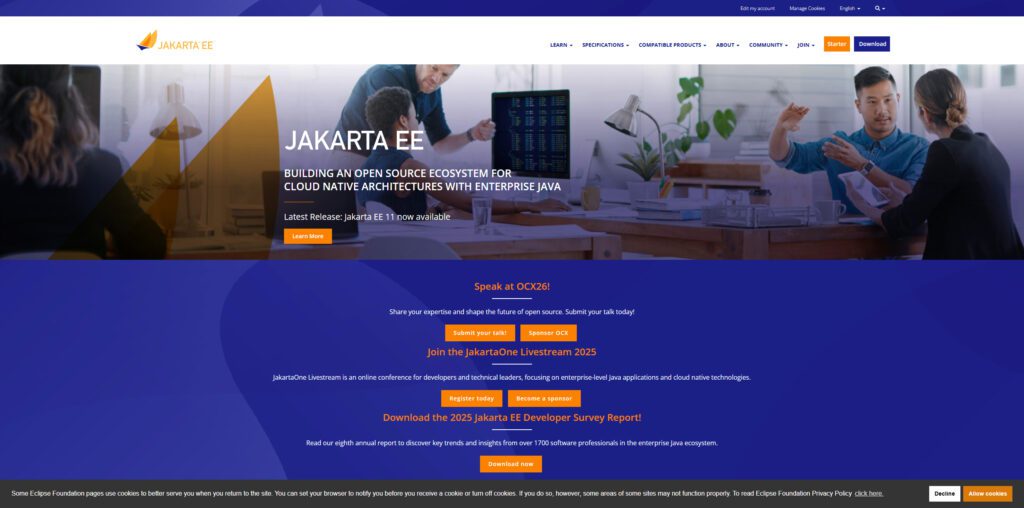
Jakarta EE (formerly Java EE) still matters, especially in large enterprises and legacy systems. Some of its component technologies (JAX-RS, CDI, JPA) provide the foundation for many frameworks.
It offers a standards-based path and avoids vendor lock-in, but tends to require more setup and less opinionated structure compared to Spring Boot.
Hibernate (ORM)
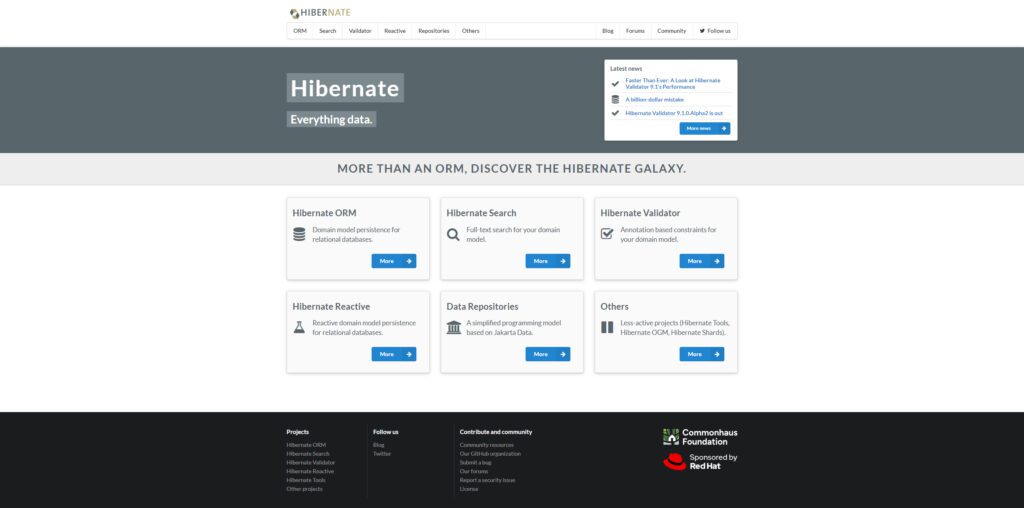
Though technically not a full framework in the sense of request routing or UI, Hibernate remains essential as the de facto ORM in Java. Nearly every Java backend selects either Hibernate (or JPA implementations) for relational data mapping.
Because data access is foundational, I treat Hibernate as part of your framework stack by default.
Rising & cloud-native frameworks
These are frameworks especially tuned for 2025’s demands: low overhead, fast startup, cloud deployment, and reactive/event-driven architectures.
Quarkus
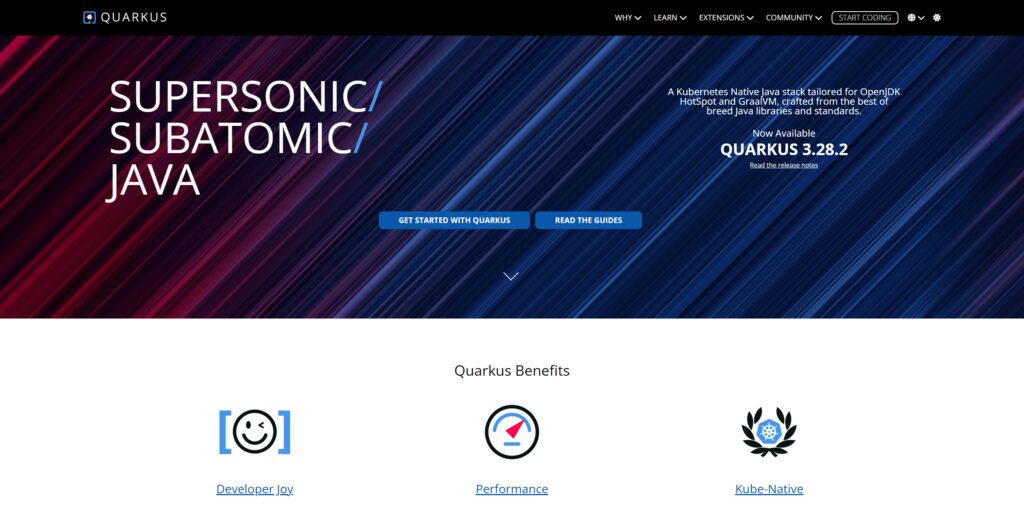
Quarkus is designed for Kubernetes, microservices, and native compilation (GraalVM). It aims to make Java “the container-first language.” Many sources predict Quarkus will dominate cloud-native Java.
It supports live reload, lower memory footprint, and optimized startup.
Micronaut
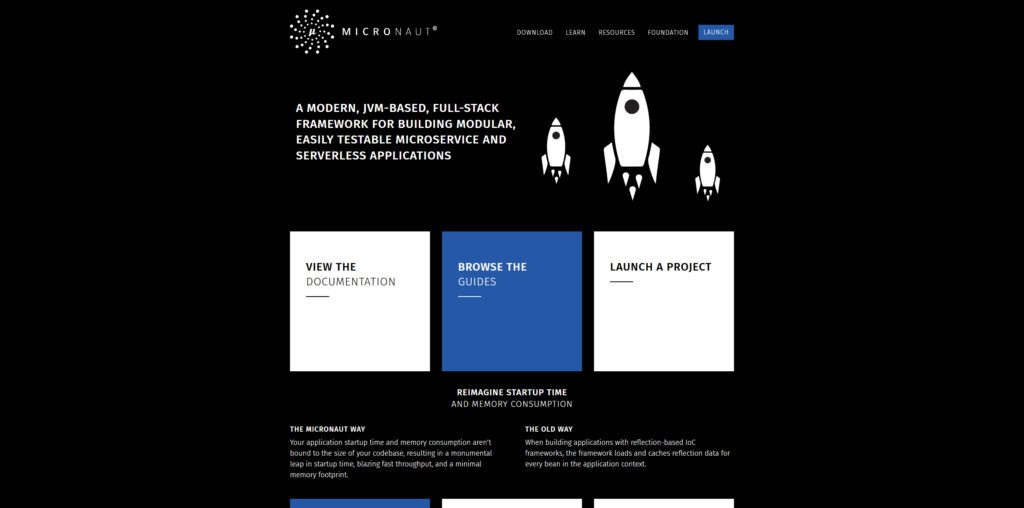
Micronaut is known for its minimal startup time and low memory usage. It performs ahead-of-time dependency injection, avoiding reflection. Many see it as a strong choice for microservices and serverless Java.
Helidon
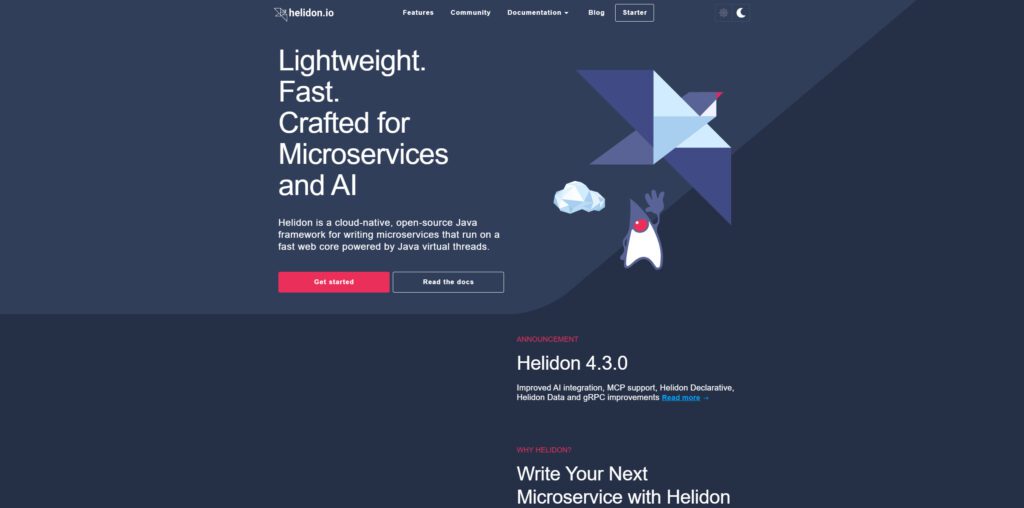
Helidon is less talked about but shows up in “top 10” framework lists for 2025. It is a lightweight framework ideal for microservices architecture.
Vert.x
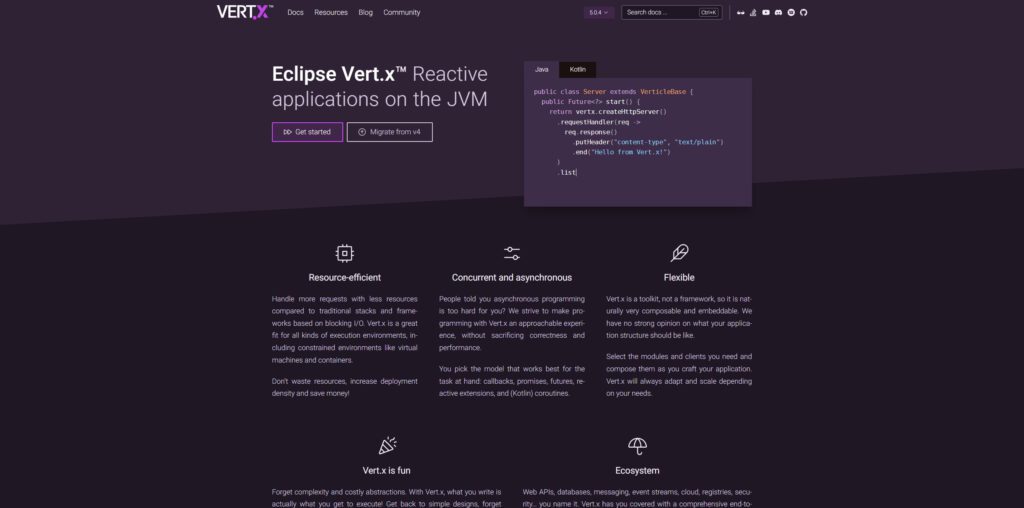
Vert.x is not new, but version 5 (released in 2025) reinforces its place as a high-throughput, event-driven toolkit on the JVM.
It supports reactive (nonblocking) architectures, making it a viable companion or alternative to frameworks above.
A simple Vert.x HTTP server:
import io.vertx.core.AbstractVerticle;
public class Server extends AbstractVerticle {
@Override
public void start() {
vertx.createHttpServer()
.requestHandler(req -> {
req.response()
.putHeader("content-type", "text/plain")
.end("Hello from Vert.x!");
})
.listen(8080);
}
}Others to watch
- Play Framework: Still favored for reactive, real-time apps.
- Dropwizard: Lightweight, used in microservices and APIs.
- GWT (Google Web Toolkit): For those who prefer writing front-end logic in Java (compiles to JavaScript)
- Vaadin: For full-stack Java UI (you can build UIs in Java and avoid directly writing JS)
- ZK: A UI/Ajax framework allowing you to build web UIs with Java and little JS.
How to pick for your project
You now know many of the players. The right pick depends on tradeoffs. Here’s a decision flow:
flowchart TD
A[Need full-stack or UI in Java?] -->|Yes| B[Vaadin / ZK / GWT]
A -->|No / backend| C[Microservice or API?]
C -->|Yes| D[Quarkus / Micronaut / Helidon / Vert.x]
C -->|No / monolith| E[Spring Boot / Jakarta EE]
B --> F{Do you want server-side UI or SPA style?}
F -->|Server-side| G[Vaadin / ZK]
F -->|Client-heavy| H[GWT + backend API]
Here are additional dimensions to weigh:
- Startup time & memory footprint
If you’re deploying many small services or using serverless, Quarkus, Micronaut, or Vert.x have strong advantage. - Ecosystem & community support
Spring still wins in sheer breadth of libraries, support and tooling (IDE integration, documentation, tutorials). - Team expertise & maintainability
If your team knows Spring well, bowing to familiarity often beats pushing for new frameworks unless payoff is clear. - Interoperability & migration path
Choosing frameworks that interoperate with standard APIs (JAX-RS, CDI, etc.) helps future migration. - Reactive / event-driven needs
For streaming, WebSockets, real-time systems, frameworks like Vert.x or reactive extensions in Quarkus or Spring (Project Reactor) shine.
Trends shaping Java frameworks in 2025
Context matters. The frameworks above don’t evolve in isolation. These trends are influencing what gets built, selected, and maintained.
- Project Loom / Virtual Threads
Loom is making concurrent programming simpler and more efficient, which may reduce the need for complex reactive frameworks in some domains. - Native images / GraalVM
Fast startup and lower footprint are critical goals. Quarkus, Micronaut, and others optimize for native image compilation. - Cloud-native / Kubernetes / serverless
The demand for microservices, containerization, and serverless environments pushes frameworks toward lighter, more modular, scalable architectures. - Standardization & APIs (Jakarta EE, MicroProfile)
Even newer frameworks adopt standard APIs (e.g. JPA, REST) to avoid lock-in. - Polyglot & modular designs
Many frameworks support multiple JVM languages (Kotlin, Scala) or modular plugin architectures to adapt to use cases.
Summary & recommendation
- If you want a safe, all-round choice, Spring Boot + Spring ecosystem remains your anchor in 2025.
- If your focus is cloud-native microservices or serverless, look seriously at Quarkus, Micronaut, or modern reactive frameworks.
- If your app involves rich Java-based UIs / full-stack Java experiences, Vaadin, ZK, or GWT deserve attention.
- Don’t forget to combine with Hibernate / JPA (for data) and consider Vert.x or reactive layers for high-concurrency parts.
Over time, your choice may change—teams adopt poly-framework strategies, mixing “heavy” and “light” based on needs. But you’ll be well-informed.


